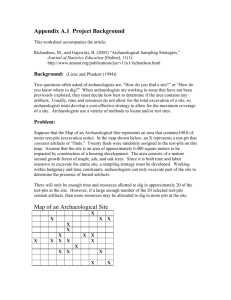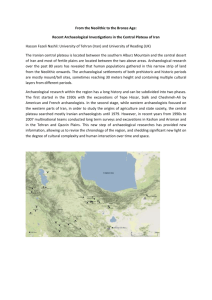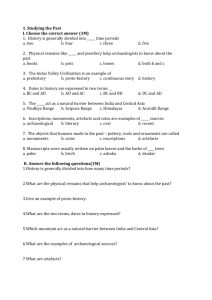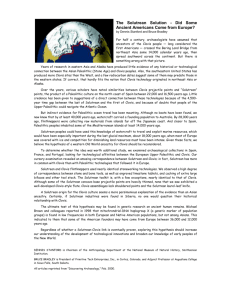Téléchargez le communiqué de presse
advertisement
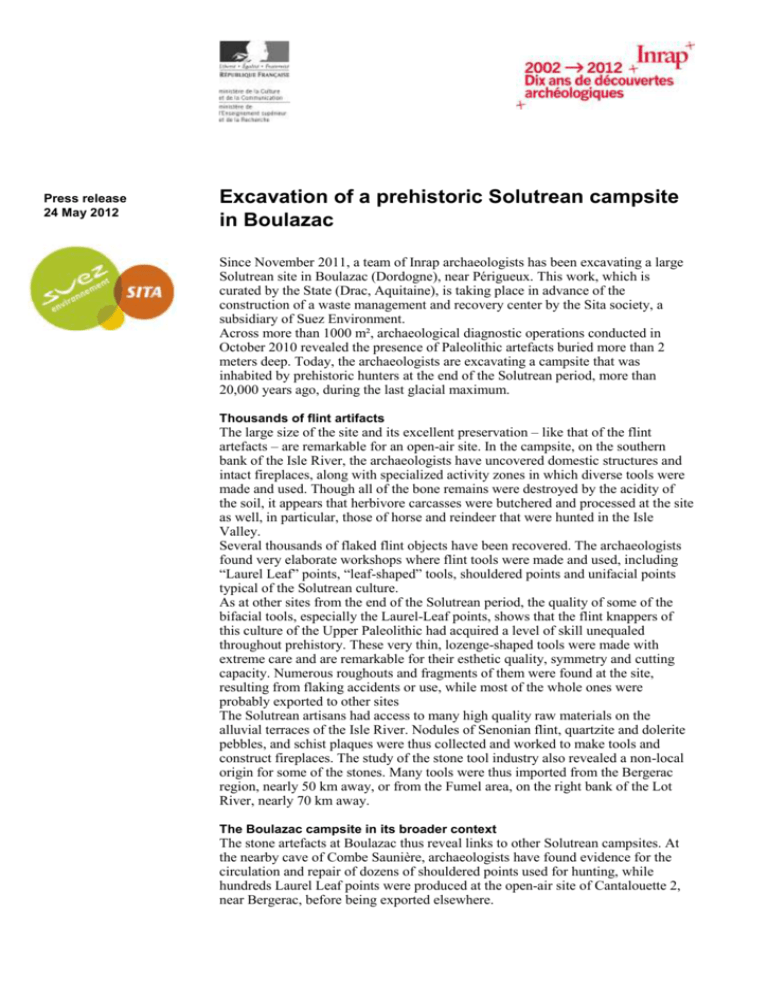
Press release 24 May 2012 Excavation of a prehistoric Solutrean campsite in Boulazac Since November 2011, a team of Inrap archaeologists has been excavating a large Solutrean site in Boulazac (Dordogne), near Périgueux. This work, which is curated by the State (Drac, Aquitaine), is taking place in advance of the construction of a waste management and recovery center by the Sita society, a subsidiary of Suez Environment. Across more than 1000 m², archaeological diagnostic operations conducted in October 2010 revealed the presence of Paleolithic artefacts buried more than 2 meters deep. Today, the archaeologists are excavating a campsite that was inhabited by prehistoric hunters at the end of the Solutrean period, more than 20,000 years ago, during the last glacial maximum. Thousands of flint artifacts The large size of the site and its excellent preservation – like that of the flint artefacts – are remarkable for an open-air site. In the campsite, on the southern bank of the Isle River, the archaeologists have uncovered domestic structures and intact fireplaces, along with specialized activity zones in which diverse tools were made and used. Though all of the bone remains were destroyed by the acidity of the soil, it appears that herbivore carcasses were butchered and processed at the site as well, in particular, those of horse and reindeer that were hunted in the Isle Valley. Several thousands of flaked flint objects have been recovered. The archaeologists found very elaborate workshops where flint tools were made and used, including “Laurel Leaf” points, “leaf-shaped” tools, shouldered points and unifacial points typical of the Solutrean culture. As at other sites from the end of the Solutrean period, the quality of some of the bifacial tools, especially the Laurel-Leaf points, shows that the flint knappers of this culture of the Upper Paleolithic had acquired a level of skill unequaled throughout prehistory. These very thin, lozenge-shaped tools were made with extreme care and are remarkable for their esthetic quality, symmetry and cutting capacity. Numerous roughouts and fragments of them were found at the site, resulting from flaking accidents or use, while most of the whole ones were probably exported to other sites The Solutrean artisans had access to many high quality raw materials on the alluvial terraces of the Isle River. Nodules of Senonian flint, quartzite and dolerite pebbles, and schist plaques were thus collected and worked to make tools and construct fireplaces. The study of the stone tool industry also revealed a non-local origin for some of the stones. Many tools were thus imported from the Bergerac region, nearly 50 km away, or from the Fumel area, on the right bank of the Lot River, nearly 70 km away. The Boulazac campsite in its broader context The stone artefacts at Boulazac thus reveal links to other Solutrean campsites. At the nearby cave of Combe Saunière, archaeologists have found evidence for the circulation and repair of dozens of shouldered points used for hunting, while hundreds Laurel Leaf points were produced at the open-air site of Cantalouette 2, near Bergerac, before being exported elsewhere. The Boulazac site will be studied by an interdisciplinary team of French and international specialists. Analyses of the geomorphology and stratigraphy of the site, the technology of the stone artifacts and the micro-morphology of fireplaces, along with dates obtained by thermoluminescence and Carbon 14, will lead to a better understanding of this prehistoric campsite and the Solutrean populations who lived there. Inrap With nearly 2000 collaborators and researchers, Inrap is the largest archaeological research structure in France and one of the most important in Europe. Each year, this public research institution realizes most of the archaeological diagnostic operations and excavations in partnership with private and public developers, equaling nearly 2000 sites per year in metropolitan France and its overseas territories. Its missions also include the scientific exploitation of the results and the diffusion of archaeological knowledge to the public. Developer Sita Suez Curation Regional Archaeology Service (Drac Aquitaine) Archaeological research Inrap Site director Michel Brenet, Inrap Contacts Mahaut Tyrrell Media communication Inrap, media partnerships and relations 01 40 08 80 24 – mahaut.tyrrell@inrap.fr Joëlle Sawané Cultural development and communication Inrap, direction interrégionale Grand Sud-Ouest et Dom 06 07 90 66 26 – joelle.sawane@inrap.fr

